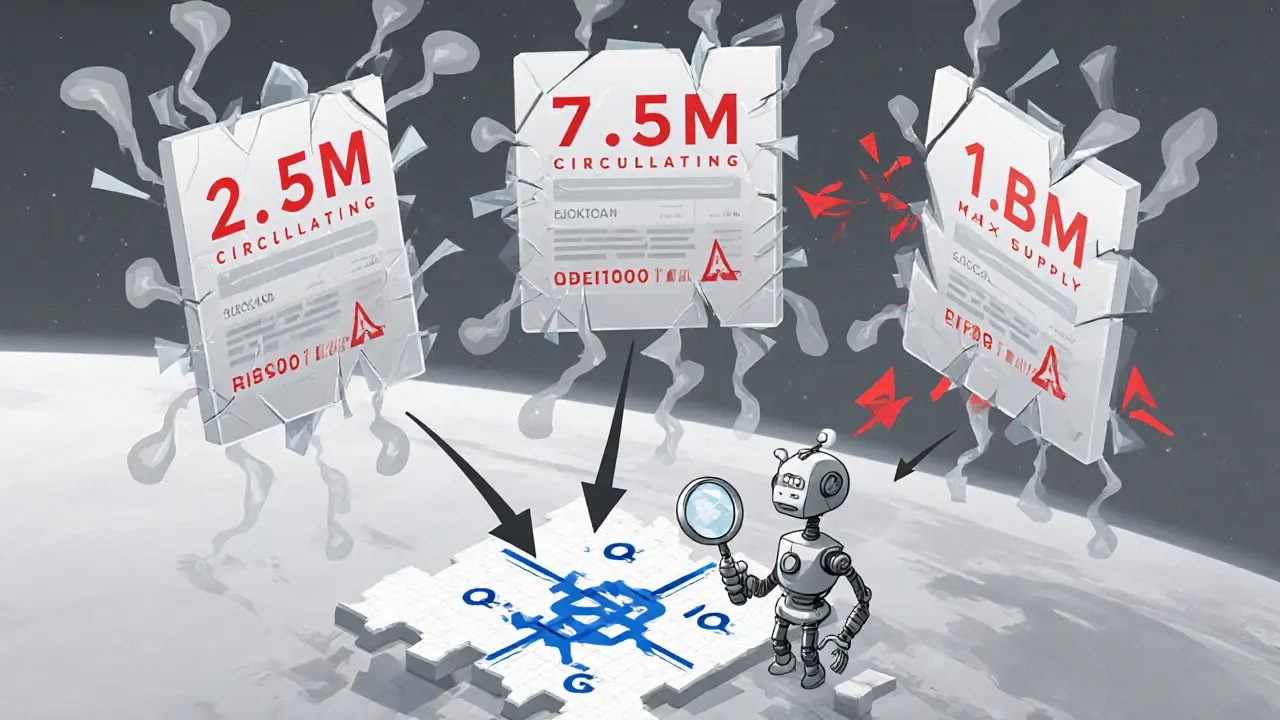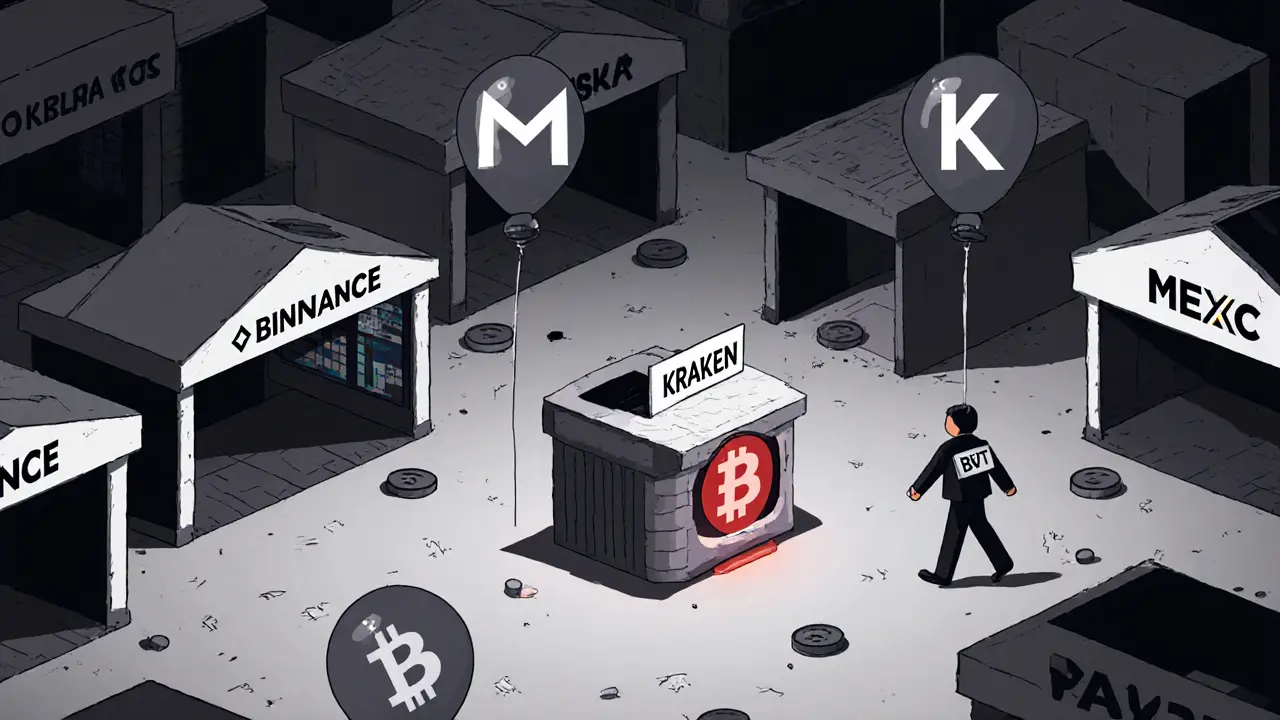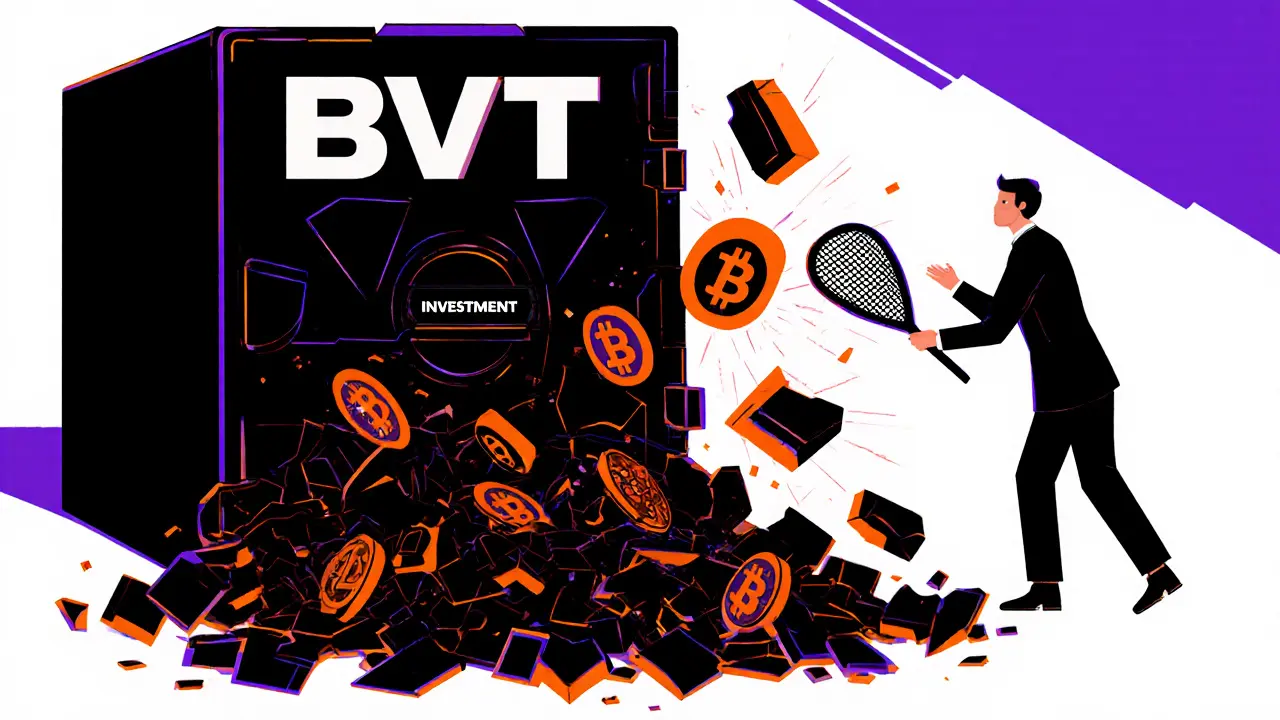BVT Supply & Price Impact Calculator
This calculator demonstrates the extreme risk of BlockVault Token (BVT) based on its supply structure. As shown in the article, 99.75% of BVT tokens are locked. See how releasing just a small percentage could crash the price.
Potential Price Impact
Releasing of locked supply will:
Current Value
$0.17 per token
Total Market Cap: $0.425
After Release
$0.00 per token
Total Market Cap: $0.00
This matches the article's warning: Releasing 10% of locked tokens would drop the price from $0.17 to $0.016.
At current rates, releasing just 10% of the locked supply would crash the price by 90%. If 50% entered the market, the price would drop below $0.01.
BlockVault Token (BVT) is a cryptocurrency built to give users control over their digital assets through blockchain tech. Sounds good, right? But here’s the reality: BVT isn’t a stable investment, a reliable tool, or even a well-documented project. It’s a low-cap token with wild price swings, inconsistent data across exchanges, and almost no real-world use. If you’re wondering whether BVT is worth your time, the answer isn’t about potential gains-it’s about avoiding serious risk.
What BVT Is Supposed to Do
BlockVault Token is meant to be the native coin of the BlockVault ecosystem, a platform that claims to offer secure, decentralized ways to earn from crypto without middlemen. The idea is simple: stake your BVT, earn rewards, and use it for transactions inside the system. Sounds like dozens of other DeFi tokens. But unlike Aave, Compound, or Uniswap-which have billions in locked value and millions of users-BlockVault has barely any traction. Its entire purpose relies on a small, unproven network with no clear advantage over established platforms.
The Supply Problem: No One Agrees on How Many BVT Exist
One of the biggest red flags with BVT is the confusion around its supply. Different platforms report wildly different numbers:
- CoinGecko says 2.5 million BVT are in circulation, with a max supply of 1 billion.
- CoinMarketCap says only 7.5 million total tokens were ever created, with 2.48 million circulating.
- Binance lists the max supply as 1 billion but shows a circulating supply of 2.48 million.
- Coinbase says 7.5 million total, 2.48 million circulating.
This isn’t just a data glitch-it’s a trust issue. When even the top crypto trackers can’t agree on how many tokens exist, it’s impossible to know if the project is honest, mismanaged, or outright deceptive. A legitimate token doesn’t leave this kind of ambiguity. If you can’t trust the basics, you shouldn’t touch the rest.
Price Chaos: From $7.31 to $0.05 in Months
BVT’s price history is a rollercoaster with no safety rails. At its peak, it hit $7.31. By October 2023, it was trading between $0.05 and $0.31-down over 95%. That’s not a market correction. That’s a collapse.
Even worse, the price varies wildly across exchanges. On Binance, it was $0.18. On Coinbase, it was $0.31. On CoinMarketCap, it was $0.055. That kind of inconsistency doesn’t happen with real assets. It happens with tokens that have almost no buyers or sellers. Low liquidity means a few trades can spike or crash the price. You’re not investing-you’re gambling on a rigged game.
Trading Volume? Barely There
Over a 24-hour period, BVT traded less than $200 on CoinMarketCap. On Binance, it hit $85,000-still tiny compared to even obscure coins. A healthy crypto project has daily trading volume at least 5-10% of its market cap. BVT’s is 0.14%. That means:
- You can’t easily buy or sell without moving the price.
- Large holders can manipulate the market with small amounts of cash.
- Exit strategies are nearly impossible.
If you buy BVT today, you might not be able to sell it tomorrow. Not because the market’s down-but because there’s no one to buy it from.

Where You Can (and Can’t) Buy BVT
BVT isn’t on Coinbase, Binance, Kraken, or any major exchange. You can only trade it on smaller platforms like MEXC. That’s a huge red flag. Big exchanges don’t list coins without thorough reviews. They avoid low-liquidity, high-risk tokens because they attract scams and regulatory attention. If a token isn’t on Binance or Coinbase, it’s not because it’s “undiscovered.” It’s because it’s too risky for serious platforms.
Market Sentiment: Fear, Not Greed
Tools like CoinCodex show BVT’s Fear & Greed Index at 38-right in the “Fear” zone. Only 30% of days in the past month saw price increases. The 14-day RSI is 34.21, which means the market is oversold but not rebounding. The 50-day moving average is $2.81. The current price? Around $0.17. That’s a 94% drop from where it was just months ago. Analysts aren’t predicting a recovery-they’re warning against buying.
One prediction tool even suggests short-selling BVT could yield a 17% profit over 75 days. That’s not a sign of growth. That’s a sign of collapse.
Who’s Holding It? Very Few People
As of October 2023, only 5,290 wallets held BVT. Compare that to even small, forgotten tokens that have 10,000-50,000 holders. This isn’t a community. It’s a handful of people, likely early investors trying to dump their coins. There are no active Discord servers. No verified Telegram groups. No GitHub updates in months. No roadmap changes. No news. Just silence.

User Reviews: A Trail of Complaints
On Trustpilot, BlockVault’s platform has a 2.1/5 rating based on just 17 reviews. Common complaints? “Can’t withdraw funds.” “Customer support never replies.” “Took 48 hours just to get an email back.”
On Reddit, users call it a “pump and dump.” One person wrote: “This looks like a classic low-cap scam.” Another said: “The supply numbers don’t add up. Avoid at all costs.” There are no success stories. No one saying, “I made 10x.” Just warnings and regret.
Why BVT Won’t Survive
Let’s break it down:
- No real utility: It doesn’t do anything better than Ethereum-based DeFi platforms.
- No liquidity: You can’t trade it without risking huge slippage.
- No transparency: Supply numbers contradict each other.
- No exchange support: Not on any major platform.
- No community: Barely anyone holds it.
- No future: No updates, no roadmap, no team activity.
The fully diluted valuation (FDV) is over $300 million-meaning if all 1 billion tokens were released, the token would be worth $0.30 each. But right now, only 2.5 million are circulating. That means 99.75% of the supply is still locked away. If even 10% of those tokens hit the market, the price could crash to zero. That’s not speculation. That’s math.
Final Verdict: Don’t Touch It
BlockVault Token (BVT) isn’t a crypto investment. It’s a warning sign. The data doesn’t lie: extreme volatility, no liquidity, inconsistent supply, zero adoption, and no support from major exchanges. The only people profiting from BVT are the ones who bought it early and sold before the crash. Everyone else is left holding a coin with no value, no buyers, and no future.
If you’re looking for crypto opportunities, there are hundreds of legitimate projects with real teams, active development, and transparent data. Don’t waste your money on a token that looks like it was created by someone who just copied a template and hoped no one would check the numbers.
Save your capital. Look elsewhere. BVT isn’t the next big thing-it’s the next big loss.

Belle Bormann
November 23, 2025 AT 06:10stuart white
November 25, 2025 AT 05:26Dave Sorrell
November 26, 2025 AT 20:01Rajesh pattnaik
November 28, 2025 AT 14:54preet kaur
November 29, 2025 AT 08:48Lisa Hubbard
December 1, 2025 AT 04:19Julissa Patino
December 2, 2025 AT 10:00Amanda Cheyne
December 3, 2025 AT 11:59jocelyn cortez
December 3, 2025 AT 19:40Emily Michaelson
December 4, 2025 AT 01:53Jody Veitch
December 4, 2025 AT 23:02Omkar Rane
December 5, 2025 AT 00:42Sky Sky Report blog
December 5, 2025 AT 05:59Tejas Kansara
December 6, 2025 AT 08:13Jenny Charland
December 8, 2025 AT 06:02Soham Kulkarni
December 8, 2025 AT 18:08John Borwick
December 10, 2025 AT 02:18Anne Jackson
December 11, 2025 AT 22:25Daryl Chew
December 12, 2025 AT 16:57